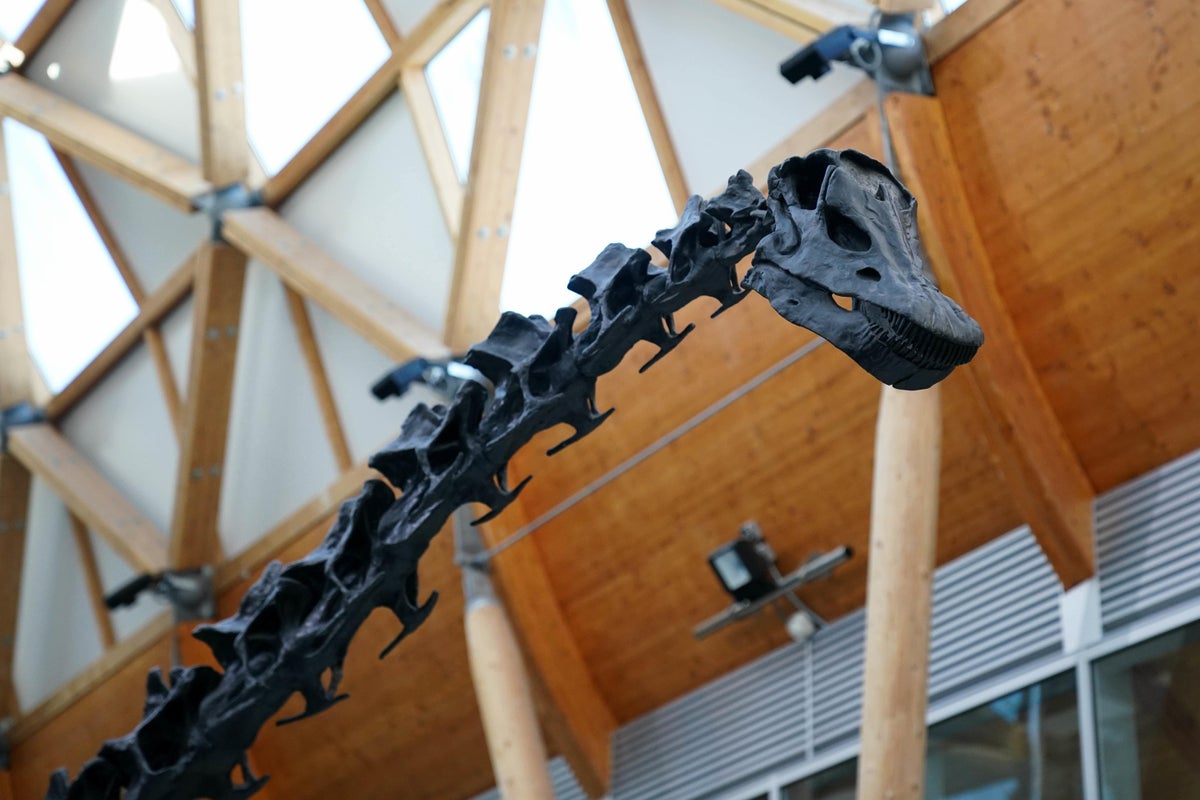‘Giant dinosaur carcasses might have been important food for Jurassic predators’

Giant dinosaur carcasses might have been important food sources for carnivorous predators, new research suggests.
Meat-eating dinosaurs lived in ecosystems rich with both living and dead prey.
The researchers hypothesise that giant carcasses, like those of sauropod dinosaurs – those with long necks, like Diplodocus – might have provided a major source of food for large carnivores.
According to Cameron Pahl and Luis Ruedas, of Portland State University in the USA, and colleagues, the predators probably waited to feast on the carcasses after the animals died in the dry season, and stored the fat in their tails to sustain them until the next dry season.
To test the theory, researchers created a simplified virtual simulation of a dinosaur ecosystem.
This was based on the ancient fauna of the Jurassic-aged Morrison Formation – a series of sedimentary rocks deposited during the Jurassic Period in western North America.
This included large predators like Allosaurus alongside large sauropods, their carcasses, and an infinite supply of huntable stegosaurs.
Our evolutionary model demonstrates that large theropods such as Allosaurus could have evolved to subsist on sauropod carrion as their primary resource
Study authors
The study authors said: “Our evolutionary model demonstrates that large theropods such as Allosaurus could have evolved to subsist on sauropod carrion as their primary resource.
“Even when huntable prey was available to them, selection pressure favoured the scavengers, while the predators suffered from lower fitness.
“So we think allosaurs probably waited until a bunch of sauropods died in the dry season, feasted on their carcasses, stored the fat in their tails, then waited until the next season to repeat the process.
“This makes sense logically too, because a single sauropod carcass had enough calories to sustain 25 or so allosaurs for weeks or even months, and sauropods were often the most abundant dinosaurs in the environment.”
In the model, carnivores (intended to simulate allosaurs) were given traits that would improve their hunting or scavenging abilities while obtaining energy from meat sources (simulating living prey or sauropod carcasses).
The evolutionary fitness of these simulated carnivores was measured, and the researchers found that, when large sources of sauropod carcasses were available, scavenging was more profitable than hunting.
This suggests the predators in such ecosystems might have evolved specialised traits to help them detect and exploit large carcasses.
The authors stress that this model represents a simplified abstract of a complex system, and that the results might be altered with the inclusion of more variables, such as additional dinosaur species or features of the life history of the simulated dinosaurs.
– The findings are published in the journal PLoS One.
For all the latest Science News Click Here
For the latest news and updates, follow us on Google News.

